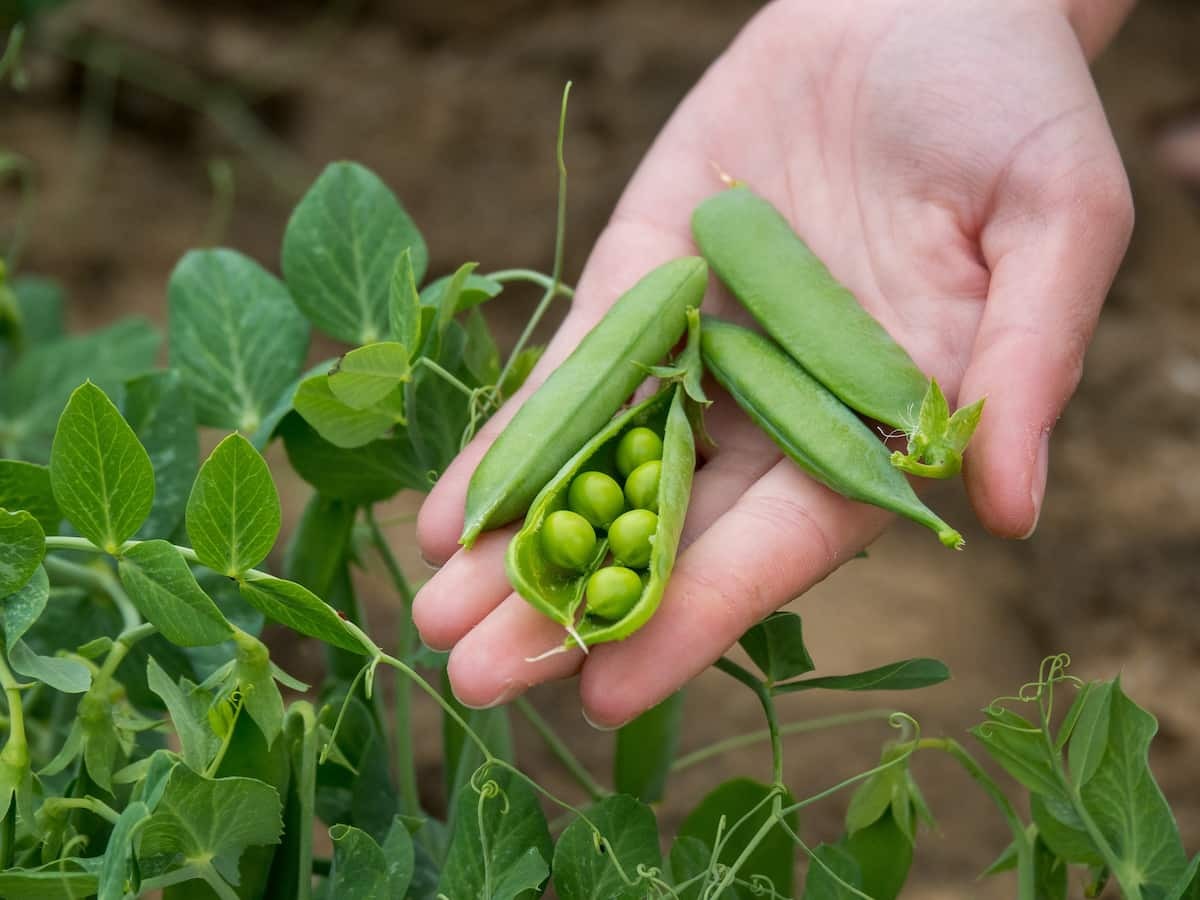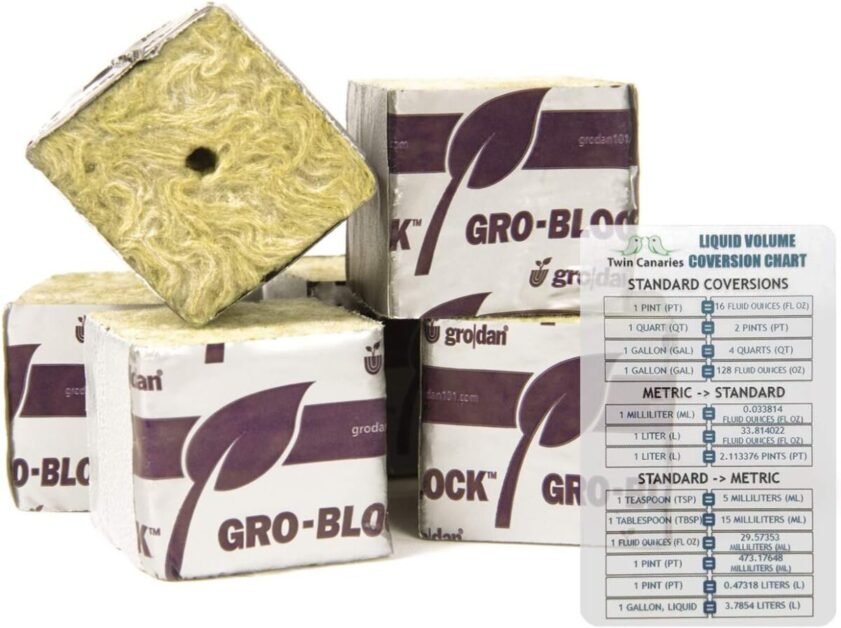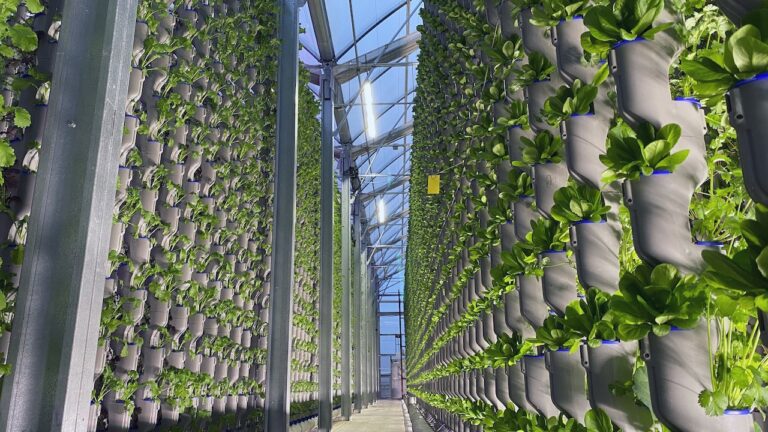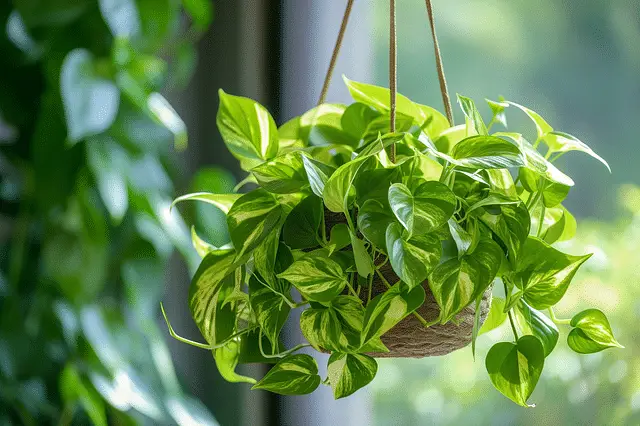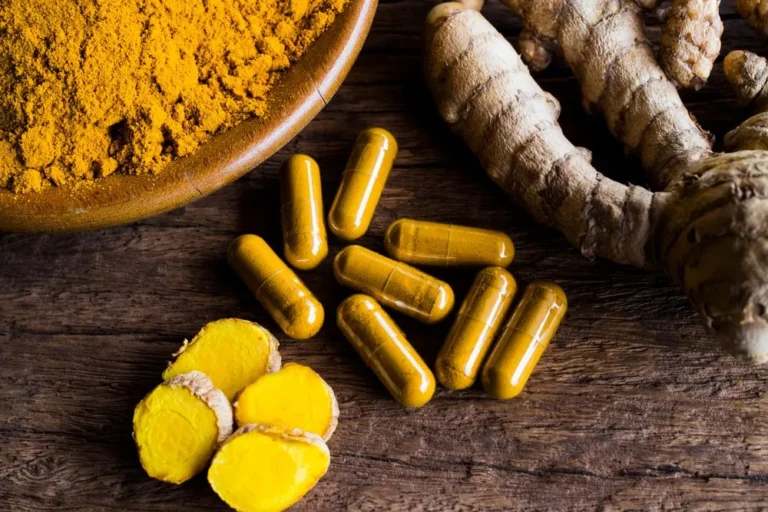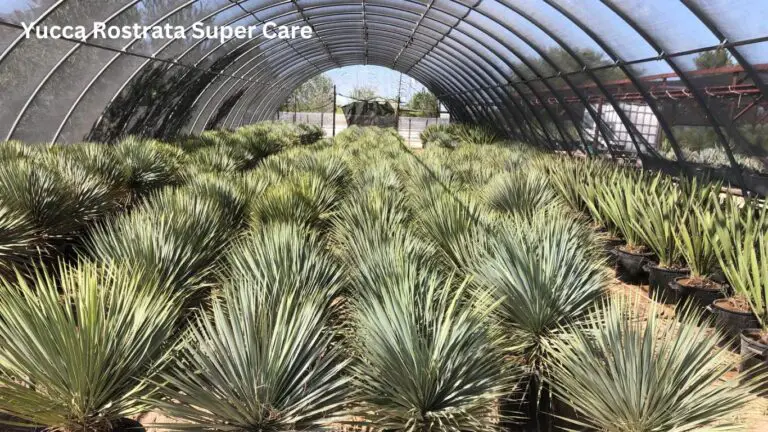Growing Peas in Hydroponics: A Comprehensive Guide
Are you interested in cultivating fresh, flavorful peas without the need for soil? Look no further! Hydroponics peas, a soil-less growing method, offers an efficient and sustainable way to produce vibrant pea plants.
In this guide, we’ll explore the benefits of hydroponic pea cultivation, nutrient solutions, and optimal conditions for robust growth. Whether you’re a seasoned gardener or a beginner, discover how to yield bountiful hydroponic peas that are both delicious and environmentally friendly. 🌱🌿
Table of Contents
Selecting the Right Pea Variety
When selecting the right pea variety for hydroponic cultivation, it is essential to consider several factors to ensure successful and productive growth.
:max_bytes(150000):strip_icc()/garden-vs-snow-and-sugar-snap-1403487-01-75756cadab74407c8d2db846f2f5ed8e.jpg)
- Growth Habit:
- Determinate Varieties: These have a compact growth habit and reach a specific height. They are ideal for smaller hydroponic systems with limited vertical space.
- Indeterminate Varieties: These continue to grow and produce pods throughout their lifecycle. They require more vertical space.
- Temperature Requirements:
- Peas thrive in cooler temperatures, making them suitable for indoor hydroponic systems with controlled environments.
- If growing in a greenhouse or during warmer months, choose pea varieties that can tolerate higher temperatures.
- Lighting Considerations:
- Adequate lighting is crucial for pea growth.
- Select varieties that can tolerate lower light levels or provide supplementary lighting if needed.
- Optimal Variety Selection:
- Choose pea varieties that align with the available space, temperature conditions, and lighting capabilities of your hydroponic setup.
- Consider both determinate and indeterminate options based on your specific requirements.
The following table explains about the different pea variety for hydroponic growing:
| Pea Variety | Days to Harvest | Growth Habit | Yield (lbs per plant) | Disease Resistance | Flavor Profile |
|---|---|---|---|---|---|
| 1. Little Marvel | 60 days | Dwarf | 1-2 lbs | Moderate | Sweet, Tender |
| 2. Oregon Sugar Pod | 65 days | Semi-Dwarf | 2-3 lbs | Resistant | Sweet, Crisp |
| 3. Sugar Snap | 70 days | Semi-Dwarf | 2-4 lbs | Moderate | Sweet, Crunchy |
| 4. Green Arrow | 70 days | Tall | 3-5 lbs | Resistant | Sweet, Firm |
| 5. Wando | 70 days | Semi-Dwarf | 2-3 lbs | High | Sweet, Peppery |
Remember that successful pea cultivation in hydroponics depends on thoughtful variety selection and proper care. 🌱🌿
Factors to Consider When Choosing Pea Varieties for Hydroponics
When selecting pea varieties for hydroponics, there are several important factors to consider.

- Growth Habit:
- Determinate Varieties: These pea varieties have a compact growth habit and reach a specific height. They are ideal for smaller hydroponic systems.
- Indeterminate Varieties: These continue to grow and produce pods throughout their lifecycle, requiring more vertical space.
- Temperature and Light Requirements:
- Peas thrive in cooler temperatures, making them suitable for indoor hydroponic systems with controlled environments.
- If you plan to grow them in a greenhouse or during warmer months, select pea varieties that can tolerate higher temperatures.
- Light Tolerance:
- Ensure adequate lighting for pea growth. Choose varieties that can tolerate lower light levels or provide supplementary lighting.
- Disease Resistance:
- Consider disease-resistant varieties to prevent common issues in hydroponic systems.
- Flavor Profile:
- Different pea varieties offer varying flavors. Some are sweet, while others may have a peppery taste.
6. Nutrient requirements. Different varieties have varying needs when it comes to nutrients such as nitrogen, phosphorus, and potassium. It is important to know the nutrient composition of your hydroponic system and choose a variety that aligns with those requirements. Additionally, some pea varieties are more resistant to diseases and pests, making them a better choice for hydroponic cultivation where these challenges can be more prevalent.
By carefully considering the growth habit, nutrient requirements, and disease resistance of different pea varieties, you can select the right ones for your hydroponic setup. This will not only ensure a successful and productive harvest but also allow you to cultivate peas that align with your preferences and growing conditions.
Popular Pea Varieties Suitable for Hydroponic Cultivation
When it comes to selecting pea varieties for hydroponic cultivation, there are several popular options that have proven to be successful.
Oregon Sugar Pod
One such variety is the Oregon Sugar Pod, which is known for its sweet flavor and tender pods. This variety is easy to grow and produces abundant yields, making it a favorite among hydroponic gardeners.
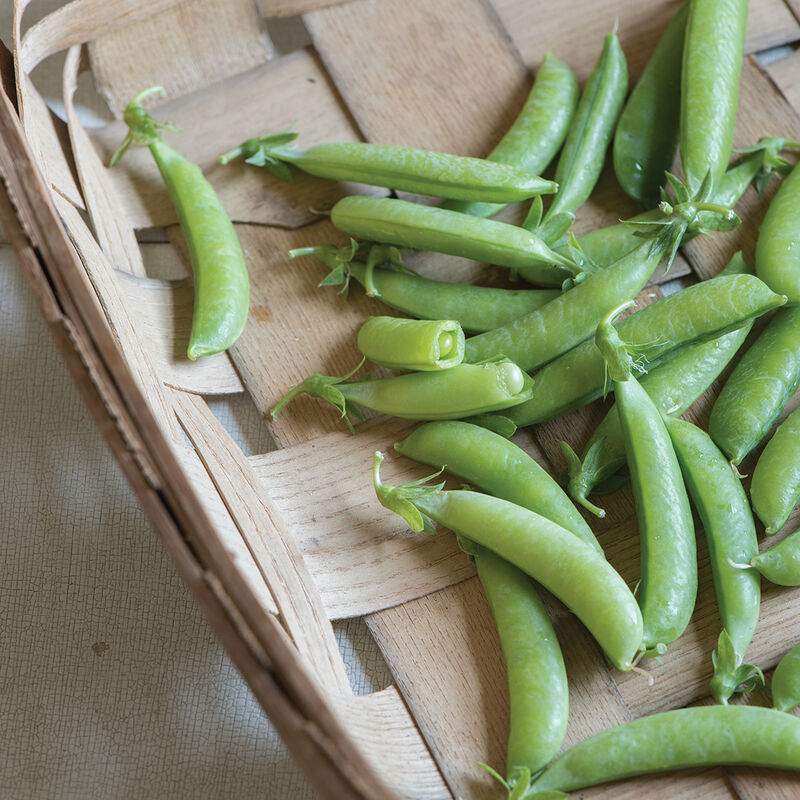
Sugar Ann Snap Pea
Another popular choice is the Sugar Ann Snap Pea, which is a compact variety that is well-suited for smaller hydroponic systems. It produces delicious edible pods and is known for its early maturity, allowing for a quicker harvest.
Cascadia Snap Pea
Additionally, the Cascadia Snap Pea is highly recommended for hydroponic cultivation due to its disease resistance and excellent flavor. This variety produces crisp and succulent pods that are perfect for snacking or adding to stir-fries. Overall, these popular pea varieties offer a range of flavors and characteristics that make them well-suited for hydroponic cultivation.
- Available Space:
- Assess the space in your hydroponic system.
- Choose a variety that fits well within the available area.
- Example: Dwarf Grey Sugar is compact and bushy, suitable for smaller setups.
- Climate and Growing Conditions:
- Consider your local climate and environment.
- Some pea varieties tolerate heat better than others.
- Example: Wando Pea thrives in warmer conditions.
- Personal Preferences:
- Think about flavor and texture preferences.
- Decide whether you prefer snap peas or snow peas.
- There’s a variety to suit every taste.
By considering these factors and selecting the appropriate pea variety, you can maximize your hydroponic pea cultivation and enjoy a bountiful harvest.
Understanding the Growth Habits and Requirements of Peas
Peas, scientifically known as Pisum sativum, are a highly versatile and nutritious vegetable that can be successfully grown in a hydroponic system. Understanding the growth habits and requirements of peas is essential for ensuring optimal plant growth and a bountiful harvest.
- Variety Selection:
- Choose pea varieties suitable for hydroponics, such as Alaska, Little Marvel, or Super Sugar Snap.
- Consider growth habits (determinate or indeterminate) based on available space.
- Temperature and Climate:
- Peas thrive in cooler temperatures (55°F to 75°F or 13°C to 24°C).
- If growing in a greenhouse, ensure proper temperature control.
- Nutrient Solution:
- Peas are natural nitrogen-fixers, but still provide a balanced hydroponic nutrient solution.
- Nitrogen is essential for healthy growth and pod development.
- Lighting:
- Ensure adequate lighting for pea plants.
- Use full-spectrum LED grow lights if natural sunlight is insufficient.
Remember to tailor these steps to your specific hydroponic setup and enjoy fresh, homegrown peas! 🌱🌿
The table provides information on growth habits and requirements of different peas varieties
| Pea Variety | Optimal Light | Temperature Range (°C) | Optimal pH Range | Nutrient Mix (EC Range) |
|---|---|---|---|---|
| Sugar Snap | Bright sunlight | 15-25°C | 6.0 to 7.0 | 0.8 to 1.8 |
| Snow Peas | Moderate light | 15-25°C | 6.0 to 7.0 | 0.8 to 1.8 |
| Little Marvel | Bright sunlight | 15-25°C | 6.0 to 7.0 | 0.8 to 1.8 |
| Green Arrow | Bright sunlight | 15-25°C | 6.0 to 7.0 | 0.8 to 1.8 |
| Wando | Moderate light | 15-25°C | 6.0 to 7.0 | 0.8 to 1.8 |
Using AeroGarden Liquid Nutrients has significantly improved the health and growth of my hydroponic plants. The convenience of this solution makes it incredibly easy to maintain the nutrient levels in my AeroGarden system without the hassle of measuring or mixing. I’ve noticed that my plants have developed vibrant foliage and robust root systems since I started using these nutrients. While the initial cost may be slightly higher than other options, the results speak for themselves, making it a worthwhile investment for any hydroponic gardener looking to achieve optimal plant growth and yield.
- Convenience: Liquid nutrients are easy to use and can be quickly added to hydroponic systems without the need for mixing or measuring.
- Customization: Many liquid nutrient solutions come with different formulations, allowing growers to tailor the nutrient levels to the specific needs of their plants.
- Optimized Nutrients: These solutions are often formulated to provide plants with the essential nutrients they need for healthy growth, promoting strong roots, lush foliage, and abundant blooms or fruit.
- Consistency: Liquid nutrients provide a consistent supply of essential elements to plants, ensuring they receive a balanced diet throughout their growth cycle.
- Fast Absorption: Liquid nutrients are readily absorbed by plants, leading to quicker growth and better overall performance.
- pH Regulation: Some liquid nutrient solutions also help regulate the pH of the hydroponic system, ensuring optimal nutrient uptake by the plants.
- Cost: Liquid nutrient solutions can be more expensive than other forms of fertilizers, particularly if you have a large hydroponic setup or need to use them frequently.
- Storage: Liquid nutrients require proper storage to maintain their efficacy. Exposure to light, heat, or air can degrade the quality of the solution over time.
- Potential for Overfeeding: It’s essential to follow the manufacturer’s instructions carefully when using liquid nutrients to avoid overfeeding plants, which can lead to nutrient imbalances or nutrient burn.
- Environmental Impact: Some liquid nutrient solutions may contain synthetic chemicals or additives that can have environmental implications if not managed properly.
- Compatibility: Not all liquid nutrient solutions are suitable for all types of hydroponic systems or plant varieties. It’s essential to choose a product that matches your specific needs and setup.
- Monitoring: Regular monitoring of nutrient levels and pH is necessary when using liquid nutrients to ensure plants are receiving the correct balance of nutrients and to prevent nutrient deficiencies or toxicities.
Preparing the Hydroponic Setup
Preparing the hydroponic setup for pea cultivation is a crucial step in ensuring successful growth and productivity.
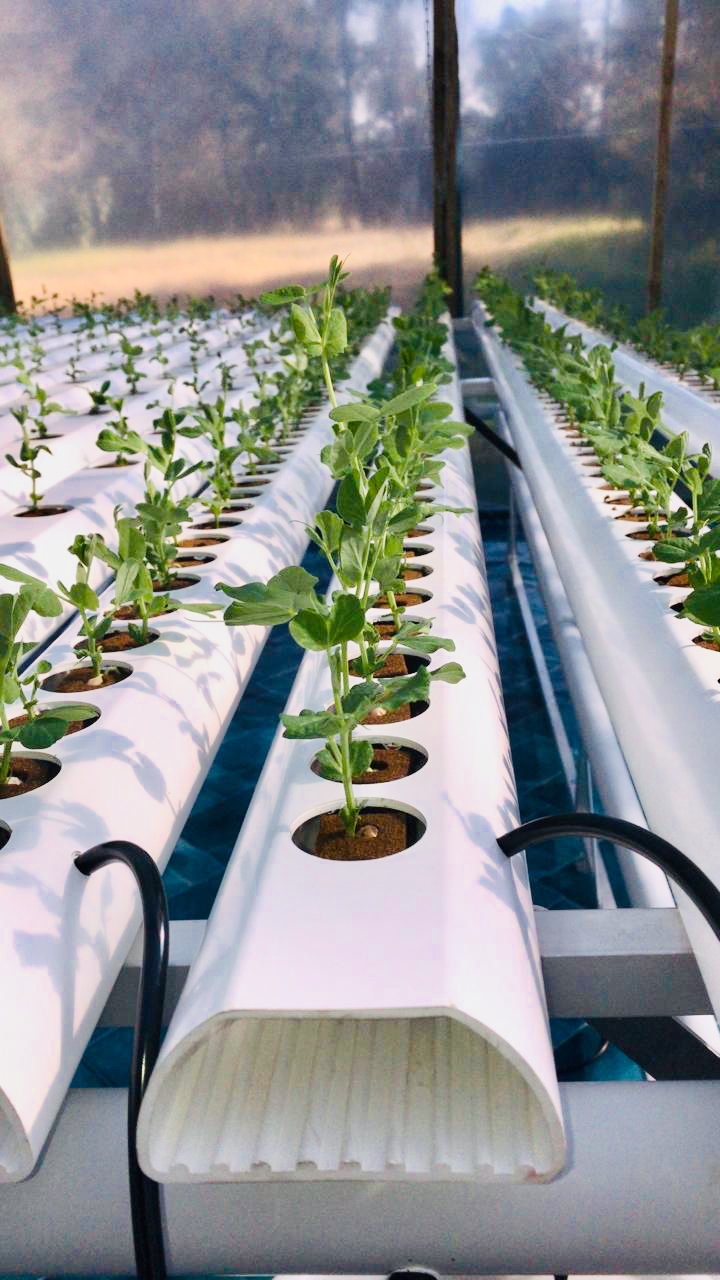
- Hydroponic System Selection:
- Choose an appropriate system based on your available space and preferences.
- Options include Nutrient Film Technique (NFT), Deep Water Culture (DWC), and Aeroponics.
- Consider advantages and limitations of each system.
- Growing Medium Choice:
By choosing the right hydroponic system and growing medium, you will establish a solid foundation for the successful cultivation of peas in a hydroponic environment.
Using Grodan Rockwool Mini Blocks has been a game-changer for my hydroponic gardening endeavors. These blocks provide a stable and sterile environment for seed germination and cutting propagation, ensuring consistent and healthy plant growth. The mini size makes them convenient to handle and transplant, while their excellent water retention properties promote robust root development. However, the limited reusability and potential skin irritation require careful handling and disposal. Overall, Grodan Rockwool Mini Blocks are a reliable choice for hydroponic enthusiasts seeking efficient and uniform plant propagation.
✅ pH Neutral: It has a neutral pH, providing a stable environment for plants and allowing for easy nutrient uptake.
✅ Sterile Medium: Rockwool is sterile, reducing the risk of pests and diseases in the growing environment.
✅ Uniform Structure: Mini blocks provide a consistent growing medium, ensuring uniform growth among plants.
✅ Easy to Handle: Mini blocks are convenient and easy to handle, making them ideal for starting seeds or propagating cuttings.
❌ Potential Irritation: Handling rockwool can cause skin irritation, so gloves should be worn when working with it.
❌ Non-Biodegradable: Rockwool is not biodegradable and can contribute to environmental waste if not properly disposed of.
❌ Alkaline pH: Some rockwool products may have a slightly alkaline pH, which may require rinsing or adjusting before use to prevent nutrient imbalances.
❌ Drainage Issues: Improperly prepared rockwool can lead to drainage problems, affecting plant health.
Setting Up the Hydroponic System for Pea Cultivation
When setting up a hydroponic system for pea cultivation, there are several key considerations to keep in mind.

- Prepare the pea seeds for germination in a hydroponic environment.
- Choose an appropriate hydroponic system for your growing needs. Popular options for pea cultivation include NFT systems, DWC systems, and vertical grow towers.
- Ensure that your hydroponic setup provides the necessary conditions for pea growth. Peas thrive in a slightly acidic pH range of 5.8 to 6.5, so monitor and adjust the pH levels of your nutrient solution accordingly.
- Provide ample amounts of oxygen to support pea root development. This can be achieved through the use of air pumps or diffusers.
- Maintain a consistent temperature and humidity level in your hydroponic environment. Peas prefer temperatures between 60-70°F (15-21°C), and a relative humidity range of 50-70% is optimal.
Choosing the Appropriate Hydroponic Medium for Peas
When it comes to choosing the appropriate hydroponic medium for peas, there are a few factors to consider.
medium
One important factor is the ability of the medium to provide adequate support for the plants as they grow. Peas can grow quite tall, so a medium that can provide stability and prevent the plants from falling over is essential.
drainage capabilities
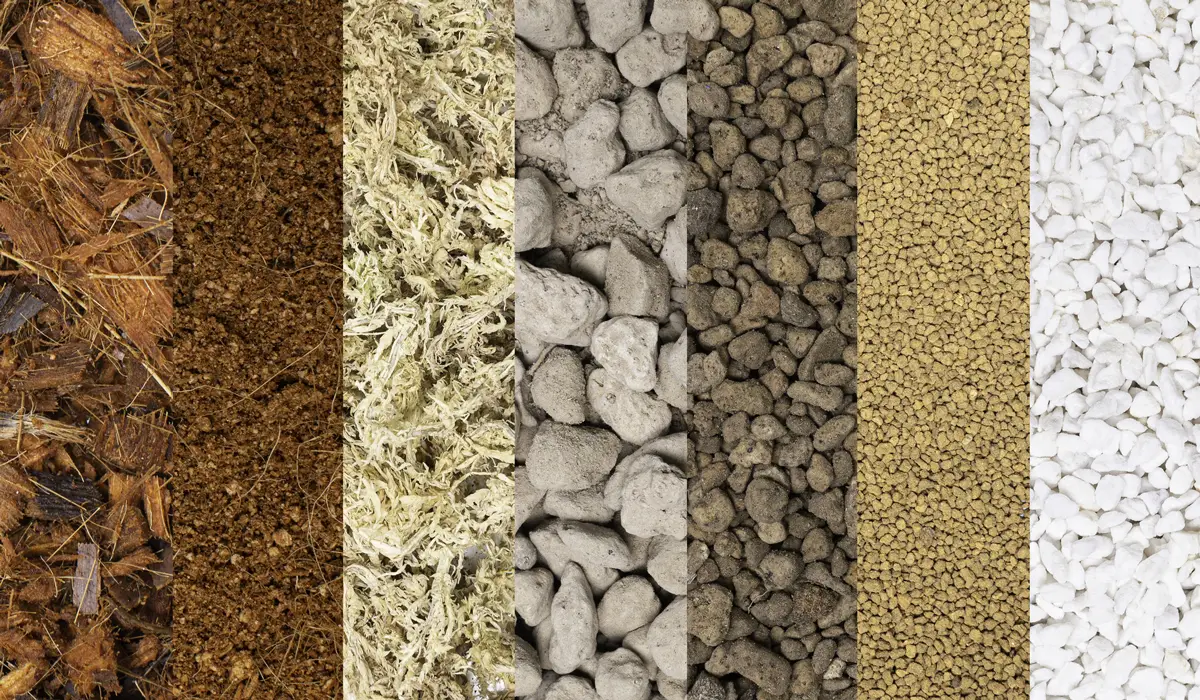
Another factor to consider is the drainage capabilities of the medium. Peas prefer well-drained conditions, as excess moisture can lead to root rot and other fungal diseases. Therefore, it is important to choose a medium that allows excess water to easily drain away, while still retaining enough moisture for the plants to thrive.
One popular hydroponic medium for growing peas is a mixture of perlite and vermiculite. This combination provides both stability and good drainage, allowing the plants to grow strong and healthy. Other options include using coconut coir, rockwool, or even a blend of different media. The choice ultimately depends on factors such as availability, cost, and personal preference.
Providing Adequate Lighting and Nutrients for Pea Growth
When it comes to providing adequate lighting for pea growth in a hydroponic system, there are a few key factors to consider. Peas are a cool-season crop, which means they thrive in temperatures between 55°F and 65°F (12°C and 18°C). Therefore, it is important to provide them with the right amount of light during their growth stages.
- In general, peas require around 12-16 hours of light per day for optimal growth. However, the intensity of the light is equally crucial.
- LED grow lights are often recommended for pea cultivation in hydroponic systems as they provide the right spectrum of light and can be easily adjusted in terms of intensity.
- Aim for a light intensity of 150-200 micromoles/m²/s for healthy pea growth.
- Additionally, make sure to position the lights at an appropriate distance from the plants to avoid heat damage.
- In addition to lighting, providing the right nutrients is crucial for pea growth and development in a hydroponic system.
- Peas are considered heavy feeders, meaning they require a significant amount of nutrients to flourish. Nitrogen, phosphorus, and potassium are the most important macronutrients for pea plants.
- However, they also require various micronutrients, such as iron, manganese, and zinc, for proper growth.
- Providing a balanced nutrient solution specifically formulated for hydroponic pea cultivation can help ensure the plants receive the necessary nutrients throughout their growth cycle.
- Regular monitoring of the nutrient solution’s pH and electrical conductivity (EC) levels is also important to maintain optimal nutrient uptake by the plants.
Germination and Seedling Stage
Germination and the seedling stage are crucial phases in the growth of pea plants in a hydroponic system. Proper care and attention during this stage will lay the foundation for strong and healthy plants that will thrive throughout their lifecycle.

- Prepare the pea seeds for germination in a hydroponic environment.
- Ensure the seeds are of high quality and have been stored properly.
- Soak the seeds in water for 24 hours to enhance germination rates.
- Conduct a germination test to check the viability of the seeds.
- Create an optimal environment for germination in your hydroponic setup.
- Maintain a controlled temperature between 70°F and 75°F (21°C – 24°C) and humidity levels around 70%.
- Use a germination tray or a seedling dome to retain moisture and promote successful germination.
- Regularly monitor the moisture levels, ensuring they are consistent but not overly saturated.
- Provide adequate lighting and nutrition for the seedlings.
- Pea seedlings require around 14-16 hours of light per day, which can be provided by LED grow lights.
- Nutrient solution rich in nitrogen, phosphorus, and potassium are essential for the development of healthy pea plants.
By ensuring proper germination conditions and providing appropriate lighting and nutrition, you can lay a solid foundation for the next stage of growth – transplanting and the vegetative stage. Stay tuned for Section 5 of this article, where we will explore this phase in detail and provide valuable insights for successful pea cultivation in a hydroponic system.
Preparing Pea Seeds for Germination in a Hydroponic Environment
Pea seeds require specific preparation in order to optimize germination in a hydroponic environment. Prior to planting, it is important to select high-quality seeds that have been properly stored and are free from disease. When choosing the pea variety, consider factors such as growth habit, disease resistance, and maturity rate to match your hydroponic system and desired harvest time.
- Seed Soaking:
- Soak pea seeds in water for 12 to 24 hours.
- This promotes hydration and activates the germination process.
- Especially beneficial for seeds with hard seed coats.
- Rinse Seeds:
- After soaking, carefully rinse the seeds to remove any remaining residue.
- Clean seeds help prevent fungal or bacterial issues during germination.
- Germination Medium:
- Transfer the soaked seeds to a suitable germination medium.
- Options include vermiculite or rockwool.
- Ensure good moisture retention and aeration.
- Specific Varietal Requirements:
- Different pea varieties may have unique germination needs.
- Consult guidelines from seed suppliers or reputable horticultural resources.
Remember to tailor these steps to your chosen pea variety and create an optimal environment for successful germination! 🌱
Optimal Conditions for Germinating Pea Seeds in Hydroponics
Optimal conditions for germinating pea seeds in hydroponics play a crucial role in ensuring successful growth and development of the seedlings.
Optimal Germination Temperature:
- Peas germinate best within the temperature range of 50°F to 68°F (10°C to 20°C).
- Consistent temperature within this range is crucial for achieving optimal germination rates.
- Maintaining a stable temperature promotes uniform seedling emergence and early growth.
Moisture Management:
- Germination requires a moist environment, but excessive moisture can lead to rot or fungal diseases.
- Keep the growing medium moist, but avoid waterlogging or saturating it.
- Regularly monitor moisture levels and adjust as necessary to maintain optimal conditions for germination.
Lighting Requirements:
- Provide bright but indirect light during the germination stage to stimulate growth.
- Pea seeds benefit from 12-16 hours of light each day to promote healthy seedling development.
- Consider using fluorescent lights or LED grow lights to ensure the seedlings receive adequate light intensity for successful germination.
By paying close attention to temperature, moisture levels, and lighting conditions, gardeners can create the optimal environment for germinating pea seeds in hydroponics. These favorable conditions support healthy seedling development and lay the foundation for successful pea cultivation in a hydroponic system.
Caring for Pea Seedlings during the Early Stages of Growth
During the early stages of growth, caring for pea seedlings is crucial to ensure their healthy development. Here are some key factors to consider:

1. Monitoring moisture levels: Pea seedlings require a consistent level of moisture in their growing medium. It is essential to regularly check the moisture content and adjust watering accordingly. Over- or under-watering can negatively impact the seedlings’ growth and lead to root rot or dehydration.
2. Providing adequate light: Proper lighting is essential for pea seedlings to develop strong and sturdy stems. Place the seedlings in a well-lit area or use grow lights to provide them with at least 14-16 hours of light per day. Ensure the light source is positioned at an appropriate distance to prevent excessive heat or light stress on the seedlings.
Remember that each pea variety may have different specific care requirements, so it is important to become acquainted with the particular needs of the variety you are growing. By prioritizing consistent moisture levels and proper lighting, you can give your pea seedlings the best start to ensure their optimal growth and future success.
Transplanting and Vegetative Stage
Transplanting pea seedlings into the hydroponic system is a crucial step in ensuring their successful growth and development.
Ensure that the seeds are of high quality and have been stored properly.
Soak the seeds in water for 24 hours to enhance germination rates.
Check the viability of the seeds by conducting a germination test before sowing.
Maintain a controlled temperature between 70°F and 75°F (21°C – 24°C) and humidity levels around 70%.
Use a germination tray or a seedling dome to retain moisture and promote successful germination.
Regularly monitor the moisture levels, ensuring that they are consistent but not overly saturated.
Pea seedlings require around 14-16 hours of light per day, which can be provided by LED grow lights.
Nutrient solutions rich in nitrogen, phosphorus, and potassium are essential for the development of healthy pea plants.
Ensure that the seedlings are strong and healthy, with well-established roots.
Gently remove them from their germination trays or pots, taking care not to damage the delicate roots.
Place the seedlings in the hydroponic system at the appropriate depth, ensuring that the roots are covered with the growing medium and the stem is adequately supported.
Maintain a suitable distance between each seedling to allow for optimal growth and airflow.
Provide sufficient light, typically in the form of full-spectrum LED lights, for at least 14 to 16 hours per day.
Ensure that the hydroponic system is properly calibrated to provide the necessary nutrients and oxygen to support healthy development.
Monitor and adjust the pH levels of your nutrient solution accordingly, maintaining a slightly acidic pH range of 5.8 to 6.5.
Ensure proper aeration within the system to support root development.
Understand the growth habits and requirements of peas.
Select pea varieties that are well-suited for hydroponic cultivation.
Provide sufficient lighting for the successful cultivation of peas in a hydroponic system.
Prepare the hydroponic setup for pea cultivation by selecting an appropriate hydroponic system and growing medium.
Care for the pea plants during the germination and seedling stage.
Continuing to provide the appropriate care and monitoring during the vegetative stage will set the stage for robust pea plants as they progress towards the flowering and fruiting stages. Monitoring the plants regularly for any signs of nutrient deficiencies, pests, or diseases will allow for timely intervention and ensure a successful hydroponic pea cultivation.
Transplanting Pea Seedlings into the Hydroponic System
Once the pea seedlings have reached a suitable size and have developed a strong root system, they are ready to be transplanted into the hydroponic system. Before transplanting, it is important to ensure that the system is properly set up and all necessary components, such as the nutrient solution and lighting, are in place.

- Seedling Removal:
- Carefully remove seedlings from their nursery containers.
- Be gentle to avoid damaging delicate roots.
- Separate any tangled roots for better nutrient absorption.
- Placement in Hydroponic System:
- Place seedlings into designated holes or slots in the hydroponic system.
- Ensure roots are fully covered by the growing medium.
- Securely position seedlings to prevent dislodging or floating.
- Lighting Adjustment:
- Adjust lighting intensity for the vegetative growth stage.
- Provide sufficient light energy for photosynthesis.
- Promote healthy plant development.
- Nutrient Solution and pH:
- Ensure the nutrient solution is properly mixed.
- Maintain correct pH levels for optimal nutrient uptake.
Transplanting pea seedlings into the hydroponic system marks an important milestone in the cultivation process. By following these steps and providing the necessary care, you are on your way to cultivating healthy and productive pea plants in a hydroponic environment.
Maintaining Ideal Growing Conditions for Pea Vegetative Growth
Maintaining ideal growing conditions for pea vegetative growth is crucial for ensuring healthy and robust plants. One of the key factors to consider is the temperature. Peas prefer cool to mild temperatures, ideally ranging from 55°F to 70°F (12°C to 21°C). Providing a consistent temperature within this range will promote optimal growth and development.
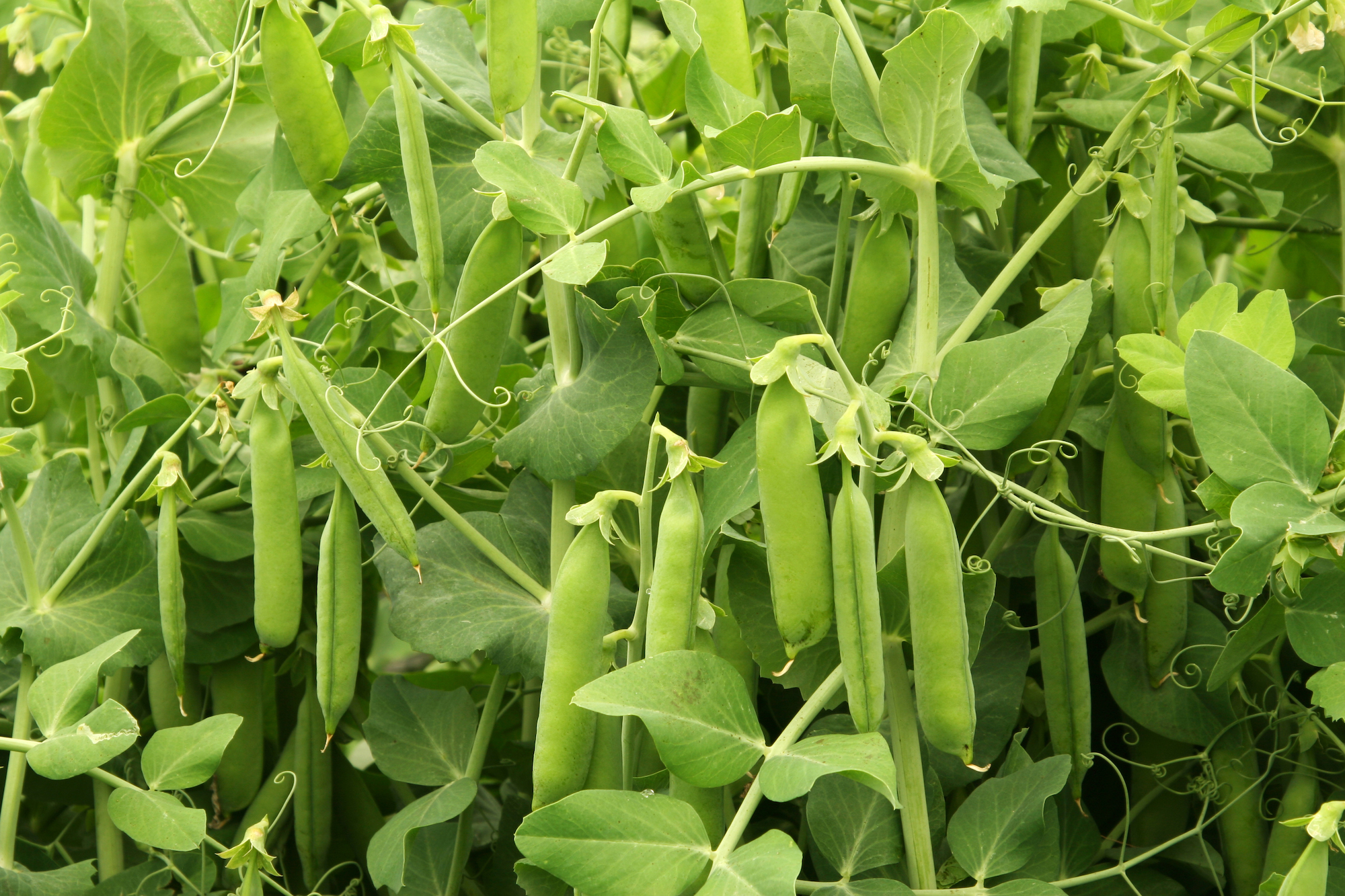
Another important aspect to focus on is light. Pea plants require ample sunlight or artificial lighting to thrive. They are known to be photoperiod-sensitive, meaning their growth and flowering are influenced by the duration of light and darkness they receive. In a hydroponic setup, it is advisable to provide 14-16 hours of light per day during the vegetative stage. This can be achieved by using high-quality grow lights such as LED or fluorescent lamps, which emit a full spectrum of light essential for plant growth.
The following table explains the ideal growing conditions for pea vegetative growth hydroponically:
| Growing Condition | Ideal Range/Value |
|---|---|
| 1. Temperature | Daytime: 65-75°F (18-24°C) |
| Nighttime: 55-65°F (13-18°C) | |
| 2. Humidity | 50-70% during the day |
| Slightly higher at night | |
| 3. pH Level | 5.8-6.5 |
| 4. Nutrient Solution EC | 1.2-2.0 mS/cm |
| 5. Light Intensity | 14-16 hours of light per day |
| 400-600 µmol/m²/s | |
| 6. CO2 Levels | 800-1200 ppm |
| 7. Watering Frequency | 2-3 times per day |
| 8. Relative Air Movement | Gentle air circulation |
In addition to temperature and light, maintaining an appropriate nutrient balance is vital for pea vegetative growth. Peas have specific nutrient requirements, with nitrogen (N), phosphorus (P), and potassium (K) being the most crucial elements. During the vegetative stage, a higher nitrogen-to-phosphorous ratio is recommended to support leaf and stem development. This can be achieved by using a balanced hydroponic nutrient solution specifically formulated for pea cultivation or by adjusting the solution’s composition accordingly.
By ensuring the right temperature range, providing adequate lighting, and maintaining an appropriate nutrient balance, gardening enthusiasts can create optimal growing conditions for pea vegetative growth. Following these guidelines will contribute to healthy and vigorous plants, setting the stage for successful pea cultivation in a hydroponic system.
Fertilizer requirements of hydroponics peas
- Germination and Seedling Stage:
- Nutrient Mix: During germination and early seedling growth, provide a balanced nutrient mix with higher nitrogen (N) for leaf development and phosphorus (P) for root growth.
- Concentrations:
- Nitrogen (N): 150-200 mg/l
- Phosphorus (P): 30-40 mg/l
- Potassium (K): 200-250 mg/l
- Calcium (Ca): 150-160 mg/l
- Magnesium (Mg): 30-40 mg/l
- Sulfur (S): 60-70 mg/l
- Micronutrients (Fe, Cu, Zn, Mn, B, Mo): Follow recommended levels for each element.
- Vegetative Stage:
- Nutrient Mix: Adjust the nutrient solution to support vegetative growth. Maintain higher nitrogen (N) levels.
- Concentrations (similar to germination stage):
- Nitrogen (N): 150-200 mg/l
- Phosphorus (P): 30-40 mg/l
- Potassium (K): 200-250 mg/l
- Calcium (Ca): 150-160 mg/l
- Magnesium (Mg): 30-40 mg/l
- Sulfur (S): 60-70 mg/l
- Micronutrients: Follow recommended levels.
- Flowering and Fruit Production:
- Nutrient Mix: Shift the focus to higher phosphorus (P) and potassium (K) levels for flower and fruit development.
- Concentrations:
- Nitrogen (N): Reduce to 100-150 mg/l
- Phosphorus (P): Increase to 40-50 mg/l
- Potassium (K): Increase to 250-300 mg/l
- Calcium (Ca) and Magnesium (Mg): Maintain similar levels.
- Sulfur (S): Maintain similar levels.
- Micronutrients: Follow recommended levels.
- Preparation Steps:
- Ingredients Needed:
- Clean water
- Hydroponic nutrient solution (commercial mix or individual salts)
- pH adjusters (if needed)
- Mixing Process:
- Add water to a clean container.
- Follow the recommended dilution ratio for your nutrient solution (usually provided in ppm).
- Slowly add the powdered or liquid nutrients to the water while stirring gently.
- Check the EC (electrical conductivity) and pH levels using a meter.
- Adjust the solution if needed by adding more nutrients or diluting with water.
- Ensure the pH is within the optimal range (usually 5.5-6.5 for peas).
- Give the solution a final gentle stir to ensure all adjustments are well-mixed.
- Ingredients Needed:
Remember to monitor nutrient levels regularly and adjust as needed to maintain healthy pea plants throughout their growth cycle!
Pests and Diseases in hydroponics Peas
When growing peas in hydroponics, it’s essential to be vigilant about pests and diseases. Here are some common culprits and strategies for prevention and treatment:
- Common Pests:
- Aphids: These small, green, black, or gray plant lice weaken plants by sucking juice. They often gather around stems.
- Spider Mites: Tiny arachnids that cause serious damage. Look for spider-like webbing or streaks of Spider Mite blood when wiping under leaves.
- Thrips: Small metallic black specks on leaves, leading to brown, dry, and yellowing leaves due to sap-sucking behavior.
- Whiteflies: Small, white moth-like insects that fly away when disturbed. They cause white spots and yellowing due to sap-sucking.
- Fungus Gnats: Adult gnats are harmless, but their larvae feed on roots, slowing plant growth and potentially causing plant death.
- Preventive Measures and Control:
- Sticky Traps: Hang traps to catch and identify pests. Blue traps work for thrips, while yellow traps are effective against fungus gnats and whiteflies.
- Organic Sprays: Avoid chemical poisons. Try organic interventions like Azamax or Rhino Skin, which fortify plants against pests and diseases.
- Beneficial Predators: Introduce beneficial creatures like nematodes to hunt and kill pests.
- Common Diseases:
- Powdery Mildew: Appears as white powder-like substance on leaves and stems, causing stunted growth, leaf drop, and yellowing.
- Downy Mildew: Mostly found on the underside of leaves, leading to yellowing (can be misidentified with powdery mildew).
- Gray Mold: Spots on leaves turn into fuzzy gray abrasions, eventually deteriorating plants.
Watch video of more information:
FAQs
How do I choose the right pea variety for hydroponics?
When selecting a pea variety for hydroponics, consider factors such as the plant’s growth habit, disease resistance, and suitability for indoor cultivation.
What are some popular pea varieties suitable for hydroponic cultivation?
Some popular pea varieties suitable for hydroponics include Sugar Snap, Oregon Sugar Pod, and Little Marvel.
What are the growth habits and requirements of peas in hydroponics?
Peas are climbing plants that require support for vertical growth. They also need adequate lighting, nutrient solutions, and proper temperature and humidity levels to thrive in hydroponics.
How do I set up a hydroponic system for pea cultivation?
To set up a hydroponic system for peas, you will need a reservoir, pump, grow trays or channels, and a trellis or support structure for the plants.
What is the appropriate hydroponic medium for growing peas?
Peas can be grown in various hydroponic mediums, such as perlite, coco coir, or Rockwool cubes.
How do I provide adequate lighting and nutrients for pea growth in hydroponics?
Peas require a full spectrum of light, such as LED or fluorescent lights, for at least 12-16 hours a day. They also need a balanced nutrient solution, including nitrogen, phosphorus, and potassium, as well as micronutrients.
How do I prepare pea seeds for germination in a hydroponic environment?
Before germination, you can soak the pea seeds in water for a few hours to promote quicker sprouting.
What are the optimal conditions for germinating pea seeds in hydroponics?
Pea seeds germinate best in temperatures between 60-70°F (15-21°C) and with a relative humidity of 70-75%.
How do I care for pea seedlings during the early stages of growth?
During the seedling stage, ensure that the pea seedlings receive adequate lighting, maintain proper temperature and humidity levels, and provide them with a balanced nutrient solution.
How do I transplant pea seedlings into the hydroponic system?
When transplanting pea seedlings, gently remove them from their starting container and place them into the hydroponic system’s grow trays or channels, ensuring that the roots are properly covered with the chosen hydroponic medium.
How do I maintain ideal growing conditions for pea vegetative growth in hydroponics?
To promote vegetative growth, maintain a temperature range of 60-70°F (15-21°C), humidity levels of 60-70%, and provide the pea plants with adequate lighting and a balanced nutrient solution.

Studied Agricultural Engineering-Plant Protection at University of California, Davis.
Head of Content writing team at Southelmontehydroponics.com

